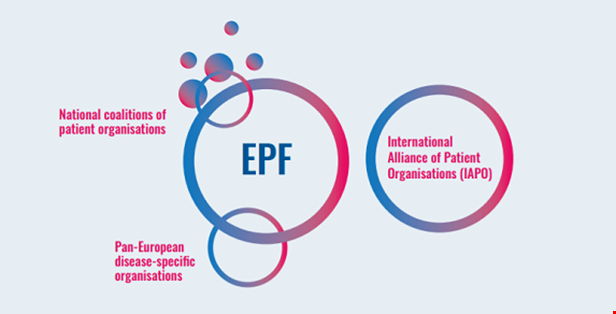Types of patient organisations

There are many types of patient organisations: some focus on the local or regional level, while others are active at national, European or international levels. Some are coalitions or organisations working across diseases, channelling the voice of the whole patient community on cross-cutting issues, while some are condition-specific, meaning that they deal with a single disease (Alzheimer’s, diabetes, multiple sclerosis, etc.) or disease-area (rare diseases, cancers, mental health conditions, etc.).
Disease-specific, local or regional patient organisations are very close to the community they represent. They have practical knowledge of disease-specific situations and realities. They sometimes choose to become part of broader coalitions, such as national coalitions or pan-European disease-specific organisations. They do so to be able to exchange knowledge and expertise with their peers, or to strengthen their voice and outreach.
- A national coalition of patient organisations is an umbrella organisation grouping national or regional patient organisations representing chronic conditions or groupings of conditions. These organisations come together and form an umbrella organisation that should be representative of the collective interests of all patients in one country. The national coalition thus becomes the single point of contact for national stakeholders and decision-makers. Of course, the national coalition only works on cross-cutting issues (e.g. access to care, discrimination, structure of healthcare systems), enabling disease-specific organisations to focus on their area of specialism.
- Pan-European disease-specific organisations are another type of umbrella organisations, gathering national patient organisations active in the same disease-area. They enable the patient community to compare situations between countries, to have a better overview of the treatments and care available across Europe, and to transfer good practices whenever possible. They are also in a better place to monitor legislative developments at EU level.
- For the sake of clarity it is important to make the distinction between EPF members and patient organisations in general. Under its umbrella, the European Patients’ Forum gathers both national coalitions and pan-European disease-specific organisations. Local, regional and national disease-specific organisations are not eligible for EPF membership, but they can be members of national coalitions and European umbrella organisations that are members of EPF. On the international level, an equivalent of a body of European patient groups is the International Alliance of Patient Organisations (IAPO).
- Patient groups are sometimes not legally formalised. They may be a sub-group active within broader organisations or alliances which include other stakeholders, such as healthcare professionals. An example of the latter is PARE, “People with Arthritis/Rheumatism in Europe”, a Standing Committee within the European League Against Rheumatism (EULAR), which encompasses patient groups, health professionals and academia and acts as a forum for patient organisations without itself being a patient organisation.
- Online patient communities are emerging thanksto the development and popularisation of social media. It is difficult to give a definition of the nature and mission pursued by these websites as these platforms are very diverse. Some of them are developing web-based applications, others are discussions’ fora…The objectives stated by these organisations are often broadly defined. Mostly, they define their mission as the creation of support networks for patients, aiming at bringing them together, fostering the exchange of good practices, and providing them with information.
Although the European Patients' Forum is not currently open to informal patient groups and online patient communities the European Patients' Forum is keen on working with new emerging actors towards achieving a collective influential patient voice in European health and related policies and a driving force to advance patient empowerment and equitable patient access to care in Europe.
Related webpages:
If you want to know more about patient organisations, visit the following pages:
What is a patient organisation?
Historial context of patient organisations
